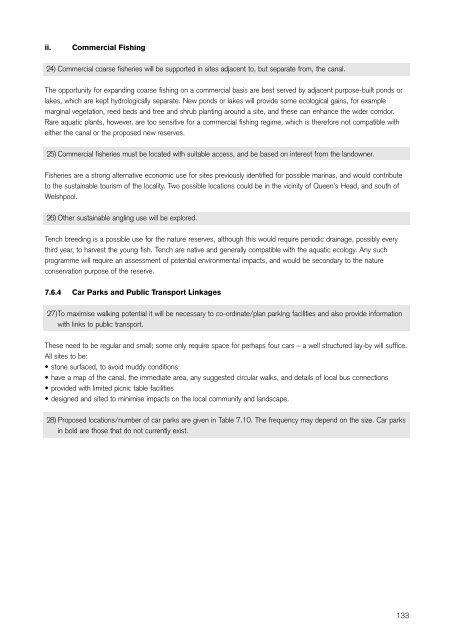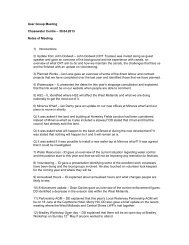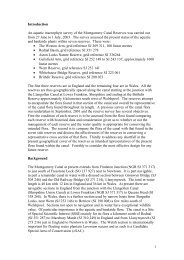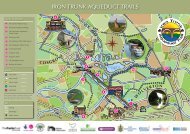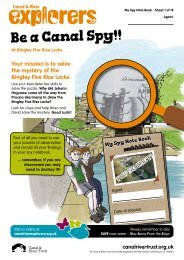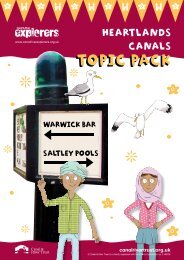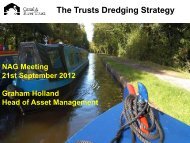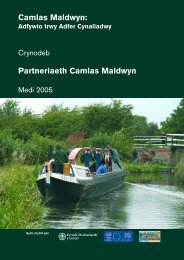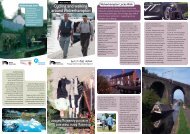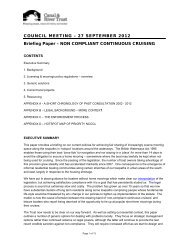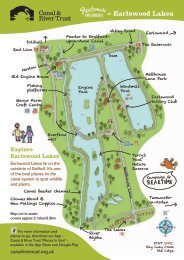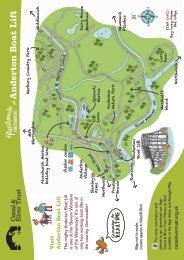Montgomery Canal Conservation Management Strategy (1.2MB PDF)
Montgomery Canal Conservation Management Strategy (1.2MB PDF)
Montgomery Canal Conservation Management Strategy (1.2MB PDF)
You also want an ePaper? Increase the reach of your titles
YUMPU automatically turns print PDFs into web optimized ePapers that Google loves.
ii.<br />
Commercial Fishing<br />
24) Commercial coarse fisheries will be supported in sites adjacent to, but separate from, the canal.<br />
The opportunity for expanding coarse fishing on a commercial basis are best served by adjacent purpose-built ponds or<br />
lakes, which are kept hydrologically separate. New ponds or lakes will provide some ecological gains, for example<br />
marginal vegetation, reed beds and tree and shrub planting around a site, and these can enhance the wider corridor.<br />
Rare aquatic plants, however, are too sensitive for a commercial fishing regime, which is therefore not compatible with<br />
either the canal or the proposed new reserves.<br />
25) Commercial fisheries must be located with suitable access, and be based on interest from the landowner.<br />
Fisheries are a strong alternative economic use for sites previously identified for possible marinas, and would contribute<br />
to the sustainable tourism of the locality. Two possible locations could be in the vicinity of Queen’s Head, and south of<br />
Welshpool.<br />
26) Other sustainable angling use will be explored.<br />
Tench breeding is a possible use for the nature reserves, although this would require periodic drainage, possibly every<br />
third year, to harvest the young fish. Tench are native and generally compatible with the aquatic ecology. Any such<br />
programme will require an assessment of potential environmental impacts, and would be secondary to the nature<br />
conservation purpose of the reserve.<br />
7.6.4 Car Parks and Public Transport Linkages<br />
27)To maximise walking potential it will be necessary to co-ordinate/plan parking facilities and also provide information<br />
with links to public transport.<br />
These need to be regular and small; some only require space for perhaps four cars – a well structured lay-by will suffice.<br />
All sites to be:<br />
• stone surfaced, to avoid muddy conditions<br />
• have a map of the canal, the immediate area, any suggested circular walks, and details of local bus connections<br />
• provided with limited picnic table facilities<br />
• designed and sited to minimise impacts on the local community and landscape.<br />
28) Proposed locations/number of car parks are given in Table 7.10. The frequency may depend on the size. Car parks<br />
in bold are those that do not currently exist.<br />
133


